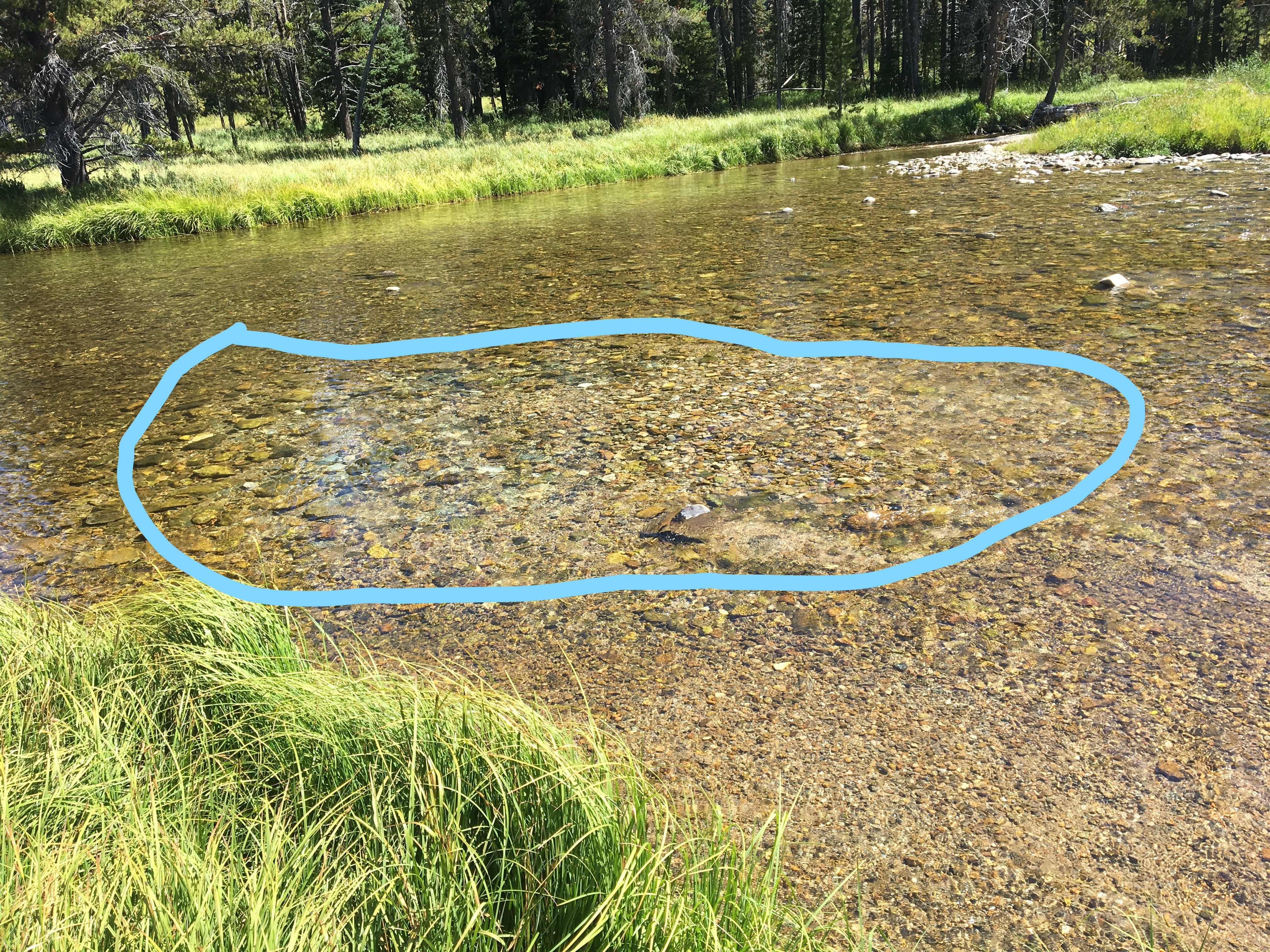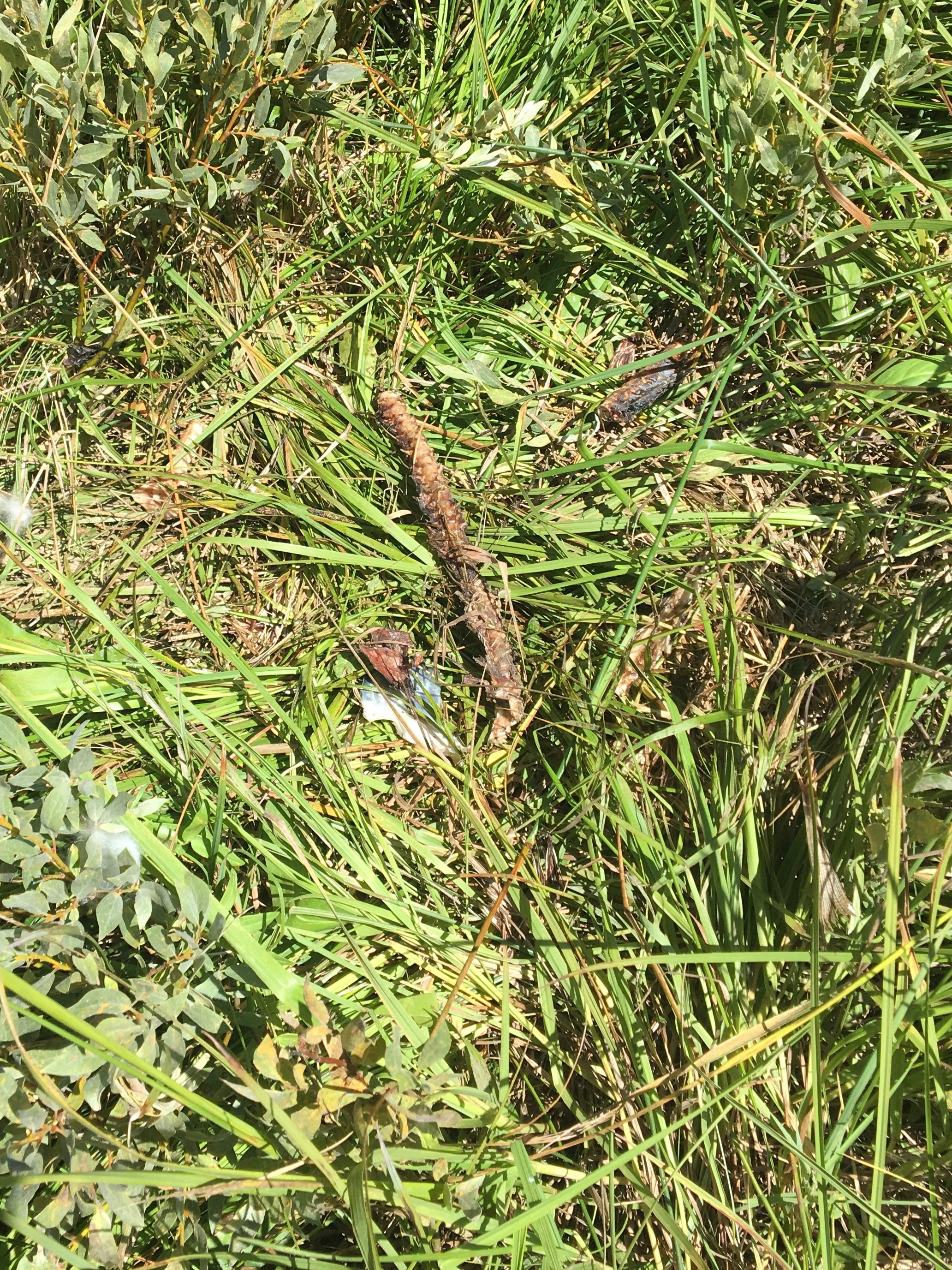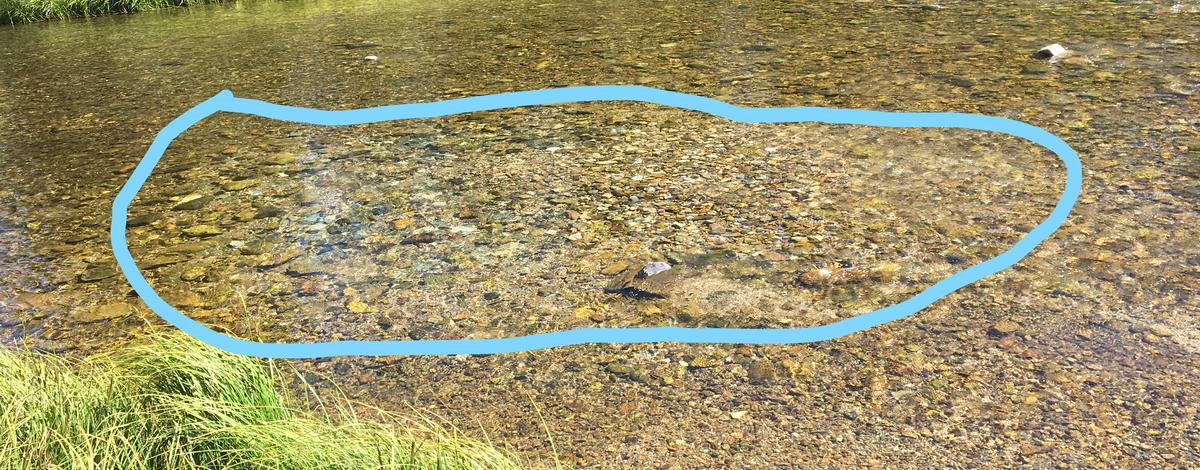Each year during August and September IDFG staff conduct spawning ground surveys to monitor the status of Idaho’s Chinook Salmon populations. Over the last couple weeks of August I observed the final days of a female Chinook Salmon who spawned successfully in Beaver Creek, a small tributary in the headwaters of the Middle Fork Salmon River, where wild salmon have priority management status. Her final journey began this spring, when she entered the freshwater of the Columbia River. From there, she swam over 750 miles upstream, climbing 8 dams and ascending over 6,500 feet in elevation to return to the gravel from which she emerged 4 years ago.
Upon reaching Beaver Creek, she began constructing what’s known as a “redd” which is a nest that female salmon build in the gravel to protect their eggs. Each Chinook female will construct a single redd which appears as a light-colored, horseshoe shaped structure in the streambed (see picture below).

After the redd is finished, a female may stand guard for 1-2 weeks before dying. Understandably, these fish are quite exhausted by this time, and can often be observed resting in pools or slack water near their redd. A week after I first observed this female’s redd, I returned to find nothing but a couple of fins and her spine on the bank. The sign in the long grass indicated that a bear captured her and took what was left of her energy stores for itself. Biologists are not the only critters searching the streambed for spawning salmon. Predators such as Bald Eagles, River Otters, and Black Bears also pay close attention to this annual event, and often capitalize on the weakened fish.

But it’s not a sad ending for this fish. She succeeded in her life’s purpose, having navigated home to Idaho where she buried her 5,000 eggs in the gravel. And four years from now, a lucky few of those 5,000 will be returning to Idaho, greeted by fascinated biologists and hungry bears alike, where they will continue their species’ extraordinary cycle.

